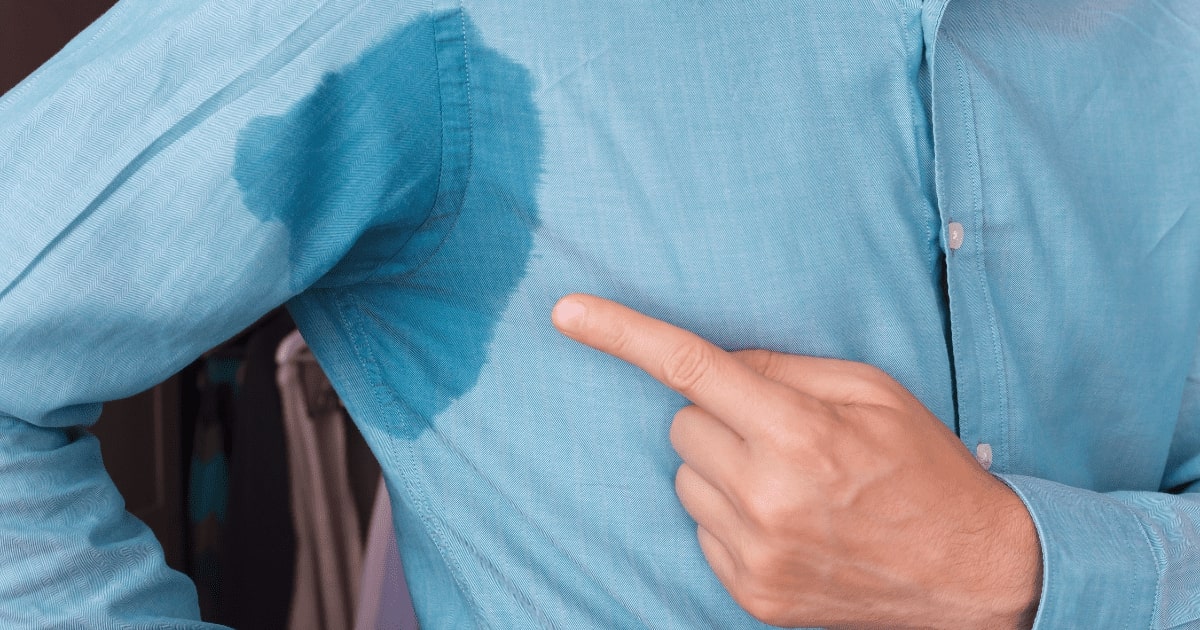Hyperhidrosis, a condition characterized by excessive sweating beyond the body's normal physiological needs, can significantly impact one's daily life. Whether it's localized in specific areas or affects the entire body, understanding the causes of hyperhidrosis is crucial for effective management. In this article, we delve into the roots of this condition, exploring the answers to questions like "What Causes Excessive Sweating?" and providing insights into the best fabrics and clothing choices for individuals dealing with hyperhidrosis. Discovering how to choose the right clothes can make a substantial difference in enhancing comfort and confidence for those navigating the challenges of excessive sweating. Join us as we unravel the intricacies of hyperhidrosis and offer practical advice on selecting the best clothing for excessive sweating.

Why Do We Sweat?
Sweat primarily consists of water, along with chlorides, calcium, magnesium, and potassium. When your body temperature rises, sweat glands activate to cool you down, aiming to maintain a temperature of 37 degrees.
Sweating is a natural process that aids in thermal regulation, skin hydration, and electrolyte balance. However, excessive sweating (hyperhidrosis) occurs when sweat glands overwork and produce more sweat than necessary.

What Causes Excessive Sweating?
There are various reasons why some people may sweat more than others, excluding weather-related factors affecting everyone. The most prevalent causes include obesity, diabetes, pregnancy, menopause, and thyroid disorders. Additionally, specific medications, smoking, excessive alcohol consumption, and stress can also lead to excessive sweating.
- Exercise
- Weather
- Alcohol
- Medications (antidepressants, non-steroidal anti-inflammatory drugs (NSAIDs), blood pressure drugs and diabetes drugs)
- Anxiety and stress
- Hormones
- Fever
- Caffeine and spicy foods
- Pregnancy
- Menopause (hot flashes)
- Hormonal changes
- Diabetes
- Obesity
- Smoking
- Peripheral Nerve Injury
- Thyroid disorder (hyperthyroidism)
- Heart disease
Excessive sweating mainly affects the following areas of the body:
- Palms of hands
- Feet
- Underarm
- Face
- Chest
- Back
- Groin area
How to Prevent Sweating?
Sweating is a natural bodily function, and it cannot be entirely eliminated through medication or other means. However, preventive measures can assist in managing excessive sweating.
- Wearing appropriate ultralight materials
- Using deodorants or antiperspirants
- Underarm sweat pads
- Spacious barefoot shoes made of natural materials are suitable for the feet
- Avoidance of spicy foods, caffeine and alcohol
What Are the Criteria for Selecting Anti-Sweat Clothing?
There are various technologies available to combat sweating. Some clothing brands incorporate an absorbent layer to prevent sweat marks, but without antibacterial treatment, bacteria may proliferate in the fabric. Alternatively, certain materials have fiber inclination that facilitates quick sweat evaporation and can even lower skin temperature by a few degrees.
Ultralight nanomaterials are gaining attention, and there are currently T-shirts available for both men and women, as well as women's dresses and shirts. Originally developed for post-operative corsets in medicine, this material is incredibly lightweight and infused with silver nanoparticles that eliminate odors.
What Are the Best Sweat Absorbent Fabrics?
Natural fibers absorb sweat very well, so if you are looking for clothes that can absorb sweat, try t-shirts made of quality organic cotton, bamboo or linen.
- Quality organic cotton
- Bamboo
- Len
- Merino wool
Which Fabrics Are Most Effective in Combating Sweat?
Bio cotton, a blend of cotton fibers and polyester infused with silver nanoparticles, is a viable option.
#produkty#https://www.nanospace.store/mens-t-shirts-slow-fashion/
What Are the Best Anti-Sweat Fabrics
Very light materials are especially suitable for those who want to prevent sweating. They can cool the skin, they dry quickly, so sweat evaporates very quickly. Some ultralight materials also have a treatment that can eliminate odors.
#produkty#https://www.nanospace.store/dresses/
Armpit circles: What colors to choose for clothes?
Least wet circles after sweating are visible on dark clothes, but white t-shirts. Bright and bold colors like light gray, light pink or light blue are the worst.
How to deal with excessive sweating at night?
If excessive sweating at night is a regular problem, try to think about whether you are sleeping in an overheated environment. The ideal temperature in the bedroom is between 17-19 degrees.
Those who sweat too much should sleep all year round under a summer-type duvet and choose a suitable very breathable sleeping clothes. However, excessive sweating is often caused by an unhealthy lifestyle, menopause and pregnancy, certain diseases and medications. If you suspect that your difficulties are beyond the tolerable limit, consult a professional.

